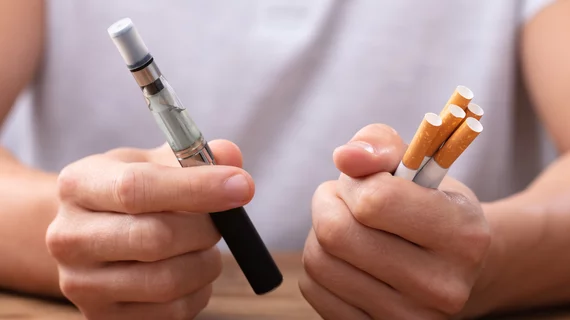CDC shares tips for radiologists facing vaping-related lung disease
The Centers for Disease Control and Prevention (CDC) is sharing tips for radiologists who are faced with vaping-related lung disease, and it has also put a specific name to the deadly ailment.
E-cigarette- or vaping-associated lung injury—“EVALI,” as they’re calling it—has already affected about 1,300 individuals across the U.S., killing 26. The CDC has not identified the precise cause of these cases, but noted that the commonality across this “concerning outbreak” is the use of vaping products. Until details become clearer, the center released interim clinical guidance on Friday, Oct. 11, for the initial assessment, evaluation and management of EVALI.
“CDC will continue its investigation of the cause or causes so that we can bring an end to lung injury cases associated with e-cigarette use.” Director Robert Redfield, MD, said in a statement.
Health officials said EVALI is currently considered a “diagnosis of exclusion,” since there are not specific markers to denote its presence. Confronted with the condition, providers should consider multiple causes and evaluate alternative diagnoses, according to the CDC.
The guidance urges providers to ask patients who report using vape products about any corresponding respiratory, gastrointestinal or constitutional symptoms. They should also quiz about the types of substances used, such as THC or nicotine. Of nearly 600 patients who reported EVALI-like symptoms to the CDC, 76% said they used THC-containing products.
Providers are urged to obtain a chest radiograph from all patients with vaping-related injury who also have respiratory or gastrointestinal symptoms. They should also consider a chest CT for evaluation of severe or worsening disease, complications, other illnesses or when a chest x-ray doesn’t correlate with clinical findings.
Last week, researchers from several academic institutions also shared tips to help radiologists prepare for patients presenting with vaping-related lung disease.

